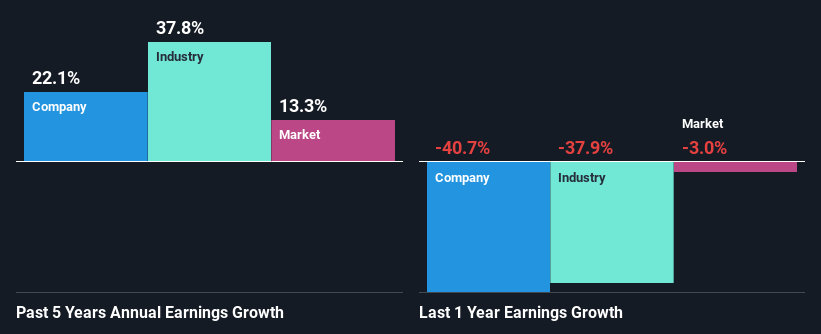Mesa Royalty Trust's (NYSE:MTR) Stock Has Shown Weakness Lately But Financial Prospects Look Decent: Is The Market Wrong?
With its stock down 16% over the past month, it is easy to disregard Mesa Royalty Trust (NYSE:MTR). But if you pay close attention, you might find that its key financial indicators look quite decent, which could mean that the stock could potentially rise in the long-term given how markets usually reward more resilient long-term fundamentals. Particularly, we will be paying attention to Mesa Royalty Trust's ROE today.
Return on Equity or ROE is a test of how effectively a company is growing its value and managing investors’ money. Put another way, it reveals the company's success at turning shareholder investments into profits.
View our latest analysis for Mesa Royalty Trust
How Is ROE Calculated?
The formula for ROE is:
Return on Equity = Net Profit (from continuing operations) ÷ Shareholders' Equity
So, based on the above formula, the ROE for Mesa Royalty Trust is:
74% = US$2.3m ÷ US$3.1m (Based on the trailing twelve months to March 2024).
The 'return' is the profit over the last twelve months. One way to conceptualize this is that for each $1 of shareholders' capital it has, the company made $0.74 in profit.
What Has ROE Got To Do With Earnings Growth?
So far, we've learned that ROE is a measure of a company's profitability. Depending on how much of these profits the company reinvests or "retains", and how effectively it does so, we are then able to assess a company’s earnings growth potential. Assuming everything else remains unchanged, the higher the ROE and profit retention, the higher the growth rate of a company compared to companies that don't necessarily bear these characteristics.
Mesa Royalty Trust's Earnings Growth And 74% ROE
Firstly, we acknowledge that Mesa Royalty Trust has a significantly high ROE. Additionally, the company's ROE is higher compared to the industry average of 18% which is quite remarkable. So, the substantial 22% net income growth seen by Mesa Royalty Trust over the past five years isn't overly surprising.
As a next step, we compared Mesa Royalty Trust's net income growth with the industry and were disappointed to see that the company's growth is lower than the industry average growth of 38% in the same period.
Earnings growth is a huge factor in stock valuation. It’s important for an investor to know whether the market has priced in the company's expected earnings growth (or decline). This then helps them determine if the stock is placed for a bright or bleak future. One good indicator of expected earnings growth is the P/E ratio which determines the price the market is willing to pay for a stock based on its earnings prospects. So, you may want to check if Mesa Royalty Trust is trading on a high P/E or a low P/E, relative to its industry.
Is Mesa Royalty Trust Using Its Retained Earnings Effectively?
Mesa Royalty Trust has a significant three-year median payout ratio of 100%, meaning the company only retains 0.09% of its income. This implies that the company has been able to achieve high earnings growth despite returning most of its profits to shareholders.
Additionally, Mesa Royalty Trust has paid dividends over a period of at least ten years which means that the company is pretty serious about sharing its profits with shareholders.
Conclusion
On the whole, we do feel that Mesa Royalty Trust has some positive attributes. As noted earlier, its earnings growth has been quite decent, and the high ROE does contribute to that growth. Still, the company invests little to almost none of its profits. This could potentially reduce the odds that the company continues to see the same level of growth in the future. Until now, we have only just grazed the surface of the company's past performance by looking at the company's fundamentals. To gain further insights into Mesa Royalty Trust's past profit growth, check out this visualization of past earnings, revenue and cash flows.
Have feedback on this article? Concerned about the content? Get in touch with us directly. Alternatively, email editorial-team (at) simplywallst.com.
This article by Simply Wall St is general in nature. We provide commentary based on historical data and analyst forecasts only using an unbiased methodology and our articles are not intended to be financial advice. It does not constitute a recommendation to buy or sell any stock, and does not take account of your objectives, or your financial situation. We aim to bring you long-term focused analysis driven by fundamental data. Note that our analysis may not factor in the latest price-sensitive company announcements or qualitative material. Simply Wall St has no position in any stocks mentioned.

 Yahoo Finance
Yahoo Finance 
